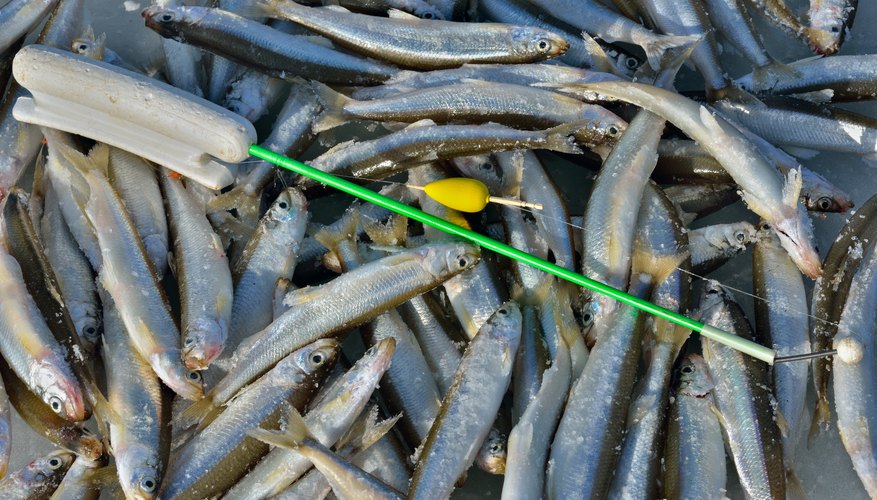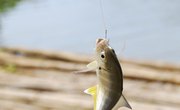
Smelt are small, slender, streamlined fish that migrate into freshwater each year during the colder months. The sweet taste of cooked smelt makes them a popular target for anglers, who use a number of different baits to catch these little fish in large numbers. Smelt are frequently taken using natural baits, such as marine worms or bait fish, however, artificial lures also work well.
Marine Worms
Marine worms, such as blood worms or sand worms, work well as smelt bait. Smelt anglers fish these worms in small pieces. Some anglers soak the worms in Mercurochrome, a bright red, iodine-based solution, commonly used as an antiseptic. The Mercurochrome toughens and colors the worms. The smell of iodine, which resembles the scent of other marine worms that smelt feed on, can attract the fish.
Bait Fish
According to the Gulf of Maine Research Institute, anchovies, silversides, small herring, alewives and other small bait fish make good smelt bait. Smelt fishermen can use these fish whole and live; however, most prefer to use them as cut bait. A small piece of bait fish on a hook will often do when smelt are actively feeding.
Smelt
Many fishermen actually use smelt itself as a bait to catch other smelt, particularly when they exhaust supplies of other baits. A piece of smelt tail or a fillet of smelt cut into small pieces with the skin intact makes an enticing and tough bait that holds well on the hook.
Artificial Baits
Many anglers find artificial baits successful when smelt fishing. Tiny jigs or spoons, often painted red or white, are a common choice. Premade multihook rigs that hold several tiny jigs specifically designed for catching bait fish, called Sabiki rigs, also work well. Many anglers tip hooks with yarn to catch smelt. When smelt bite the yarn, the fibers tangle in their teeth, making them easier to catch.
References
Writer Bio
In Jacksonville, Fla., Frank Whittemore is a content strategist with over a decade of experience as a hospital corpsman in the U.S. Navy and a licensed paramedic. He has over 15 years experience writing for several Fortune 500 companies. Whittemore writes on topics in medicine, nature, science, technology, the arts, cuisine, travel and sports.



